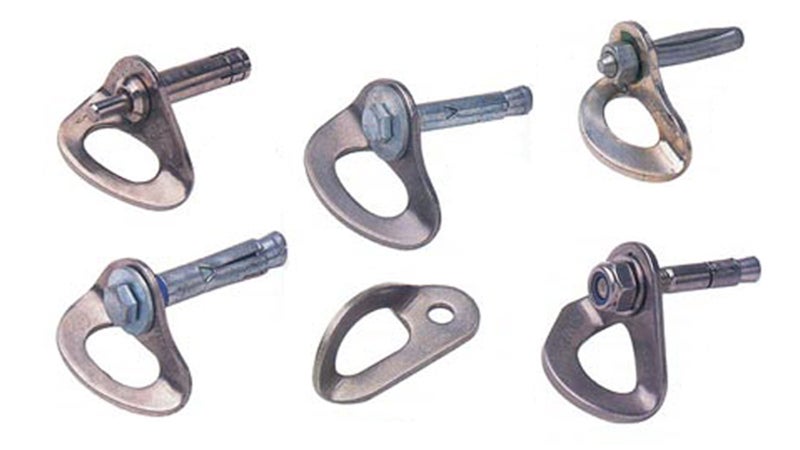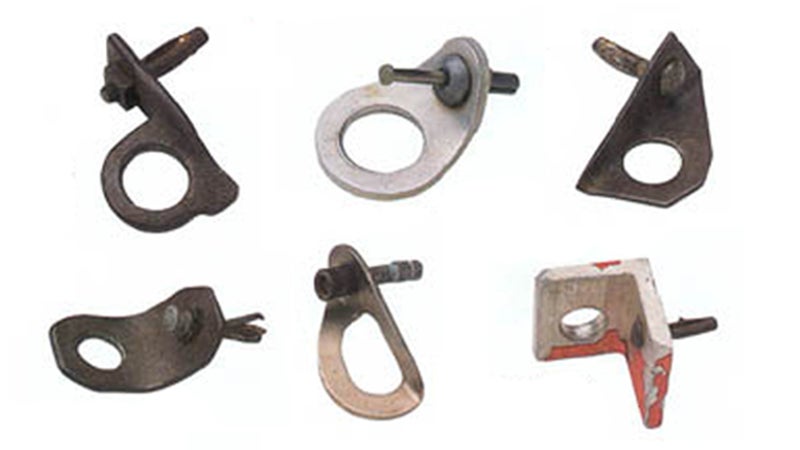what to do when you find a lose bolt climbing
Get total access to Outside Learn, our online education hub featuring in-depth fitness, nutrition, and adventure courses and more than two,000 instructional videos when you sign up for Outside+.
Ane day last March, 44-year-old Scott Sederstrom was climbing in the Owens River Gorge, a pop sport climbing expanse just outside of Mammoth, California, using an avant-garde technique called rope-soloing, which involves a climber clipping each bolt above with a stick-prune, then unclipping from the bolt beneath. Virtually 25 feet off the footing, while clipped into the tertiary bolt, Sederstrom was scaling an arête when the bolt snapped in half and pulled out of the rock. Sederstrom tumbled downwards, striking the basis, and was killed, probable due to head trauma. (He was not wearing a helmet.)
Sederstrom'south trunk was found by Inyo Canton Search and Rescue the next morning time, after his fiancé became concerned and collection to the crag, where she found his van and dog in the parking lot. Upon inspection, it was found the bolt that failed was an old iii/viii-inch buttonhead. It was likely placed over 20 years ago, had corrosion subconscious beneath the surface, and could have been partly fractured before Sederstrom always clipped to it.
The style Sederstrom was rope-soloing, which left him relying on a unmarried bolt instead of on multiple points of protection, is inherently riskier than typical sport climbing. Merely his assumption is shared by every sport climber at the crag: Bolts are safe. Modernistic ones—typically fabricated of stainless steel—are designed to withstand upwards of iii,300 pounds of outward force and more than 5,600 pounds of downward pull. But bolts clothing down and corrode over time, and even the most expertly placed ones eventually need to be replaced.
In that location are roughly 60,000 sport routes across the U.S., roughly a tertiary of which were put up in the late 1980s and early 1990s, co-ordinate to Nick Wilder, co-founder of Mountain Project. The bolts on these routes are now reaching the end of their projected lifespan—roughly 20 years—and may or may not exist safe to climb on. In fact, there are likely hundreds of thousands of bolts that volition need to be replaced in the not likewise afar hereafter, according to Brady Robinson, executive director of the Admission Fund,which works to open climbing areas across the country to the public. To chip abroad at the issue, the fund and the American Tall Club last month announced a $10,000 circular of funding through a new program called the Anchor Replacement Fund. Seventeen climbing organizations nationwide received a portion of that money for bolt replacement.
"Some of these bolts are just ticking time bombs," says Ian Kirk, founder of the Blood-red River Gorge Stock-still Gear Initiative, which raises money for rebolting efforts and received a small grant. The Cerise River Gorge, a world form climbing destination in Kentucky with more than two,000 sport routes, represents a microcosm of sport climbing's booming popularity. Route development there "has been occurring at an exponential pace in the concluding ii decades," co-ordinate to Kirk's grouping's website, and more climbers than ever are clipping into, falling on, and wearing down bolts. "It's becoming a bit of a run a risk game" with older bolts, Kirk says. "You simply don't know if they're good or bad."
The Access Fund'due south $10,000 is a driblet in the bucket—designed as more than of an awareness-commuter than a solution. Robinson estimates it would cost millions of dollars to replace all the bolts nearing the cease of their lifespan. Given how many sport climbers are flocking to crags around the country, it's scary to call up that the issue of bad bolts is accelerating only as the number of people using those bolts is increasing, likewise, says Dale Remsberg, technical managing director for the American Mountain Guide Association. "Nosotros're but at the indicate now where the bolts are old enough and climbing is popular enough that accidents could beginning to happen more frequently."
The types of bolts and hangers that climbers install on new routes today—the ones you've clipped into most everywhere yous've climbed—haven't been around very long, at to the lowest degree in the scheme of the 60-plus-year history of sport climbing in the U.S. No company in the state manufactured bolts specifically designed for stone climbing until Metolius started manufacturing bolts in the belatedly 1980s. Modern climbing bolts, hangers, and bondage sold past Metolius, Fixe Hardware, ClimbTech, Petzl, and other companies are now made to see specific safety standards set by the International Climbing and Mountaineering Federation (UIAA).
Before then, every bit far back as the 1950s, when climbing was in its infancy, the tools of the sport were rudimentary. Climbers, including Yosemite legend Warren Harding, co-opted expansion bolts and fasteners designed for use in cement, brick, and stone structure projects. One of the nearly common bolts was the Star Dryvin, a steel nail inside a lead sleeve that was placed by manus-drilling a hole into a rock face and simply pounding into place. (Today, climbers typically employ power drills, then hammer in an expansion bolt, and then tighten it with a torque wrench.) A Star Dryvin was attached to a hanger, a piece of metal flush with the rock that you lot would clip the rope to when ascending. Some hangers were even handmade. These early setups were far weaker than modern climbing bolts—climbers distrusted them so much and so that many preferred to place pitons rather than hazard falling on them.

From the 1960s through the early 1980s, the bolt of choice shifted to the one/4-inch Rawl Bulldoze (a.thou.a. "buttonhead"), a construction bolt that climbers would laboriously place with a hand drill while on pb. The bolts were often fastened to old styles of (what are at present considered to be) extremely unreliable hangers, such equally the Leeper hanger. Bolt manufacturer Ed Leeper recalled all his hangers in 2004 and urged climbers to remove any remaining ones from rocks nationwide, as some are vulnerable to stress corrosion, a combination of mechanical stress and chemical corrosion that tin can cause a bolt to break in half if put under the stress of a falling climber. Past the late 1980s, climbers were using thicker, stronger bolts of 3/8-inch or 1/2-inch diameter.
The strongest and most long-lasting bolts available today are titanium, only they are and so expensive that they are generally only used at seaside crags, where the common salt air can cause peculiarly rapid corrosion to traditional steel bolts. Outside of titanium, ½-inch stainless-steel bolts are considered the contemporary gold standard, though some start ascensionists opt for less-expensive plated steel bolts. When plated steel bolts are placed on a stainless steel hanger or bolt, they are subject to a procedure called galvanic corrosion, which occurs when two dissimilar materials swap ions and degrade.
"Information technology'due south but non realistic to await metal to be performance in twenty, xxx, 40 years," says Kevin Daniels, founder of Fixe Hardware. "People need to be enlightened and think, if this bolt fails, what'southward going to happen? Even if we modify every bolt out there, that's the question that should always be on people's minds."
Experts warn that incidents similar the one that befell Sederstrom could go more mutual in the sport, only there have been surprisingly few accidents due to commodities failures in recent years. The two most recent bolt-related fatalities occurred in 2012 and 2010, in the Meadow River Area of West Virginia and in Alphabetize, Washington, respectively, according to a search of the Accidents in North American Mountaineering database. But ask around and you lot'll hear stories from experienced climbers about near misses on sketchy bolts. Robinson, for example, remembers climbing a route in the 1990s at Cathedral Spires in the Needles of Southward Dakota. "I clipped a commodities and pulled it correct out of the rock," he says. "I looked around and saw that there wasn't anything else, and so I put it back in and kept climbing." In the absenteeism of any better protection around him, he merely continued up, risking a bigger, more dangerous autumn.
Aside from the run a risk that individuals climbers face when using these bolts, at that place'south another reason the Access Fund wants to replace them: and then that climbing areas don't close. When a 12-year-erstwhile girl was critically injured by rockfall while hiking in to the Mokuleia Wall in Hawaii in 2012, the Hawaii Country Department of State and Natural Resources (DNLR) closed the wall for climbing indefinitely and installed no-trespassing signs that threatened a $2,000 fine. The ban so expanded beyond Mokuleia to include all cliffs managed by the DNLR until legislation was passed to provide the state with immunity from liability. It wasn't until Jan of this year that Mokuleia and information technology'south seventy-plus climbing routes reopened to climbers.

The Access Fund wants to make certain other areas don't suffer the same fate. Simply rebolting all the older sport routes won't happen overnight. Autonomously from funding shortages, there's also a huge shortage of manpower because few people have the specialized skills to replace bolts, and fewer have the time to do it regularly. "Information technology'south just hard to go knowledgeable people who can dedicate the time to go out at that place," says Kirk. He personally replaces hundreds of bolts each year at Red River Gorge, which usually entails using a billow bar to extract old bolts and drilling new holes for glue-in bolts, which rely on a strong chemical adhesive to proceed them in place and typically last longer than the mechanical expansion bolts they're replacing.
But information technology'due south not enough.
Nosotros need more people replacing bolts and more than funding for them. "It'southward becoming a huge undertaking for us to stay on top of it and get them replaced," Kirk says. "It'south a growing epidemic."
How to Spot Bad Bolts
In that location are some telltale signs of suspect bolts that climbers tin await out for. Buttonheads (which wait like coat buttons) and Star Dryvins (which have a star stamped on the head) should not exist trusted. If the hanger on a given commodities is loose and jiggles, that ways the bolt is sticking out of the rock more than it should exist and might non exist at full strength; the bolt may not necessarily need to be replaced, simply needs to be re-torqued to the proper tension recommended by the manufacturer.
Rust on the commodities or hanger can indicate weakness. Only not all bad bolts have visual signs of corrosion, since corrosion can happen within the bolt hole itself.
Apart from bolts, it's also of import to audit the hangers. Whatsoever Leeper hangers are suspect, and are identifiable by their sharpened edges and trapezoidal shapes. The one-time SMC hangers can be identified by how thin they are—near the thickness of a quarter. Dangerous bolts and hangers can be reported on Badbolts.com, an online database that tracks bolts that need to exist replaced and provides that info to prospective bolt-replacers.
Climbers should be especially aware in areas where high numbers of sport routes were developed more than 20 years ago, according to Remsberg at the American Mountain Guide Association including Carmine Rock Canyon, near Las Vegas, Eldorado Coulee in Colorado, and the Red River Gorge, which has a high percentage of zinc-plated bolts placed in humid weather condition.
Source: https://www.outsideonline.com/outdoor-adventure/climbing/what-happens-when-climbing-bolts-go-bad/
0 Response to "what to do when you find a lose bolt climbing"
Post a Comment